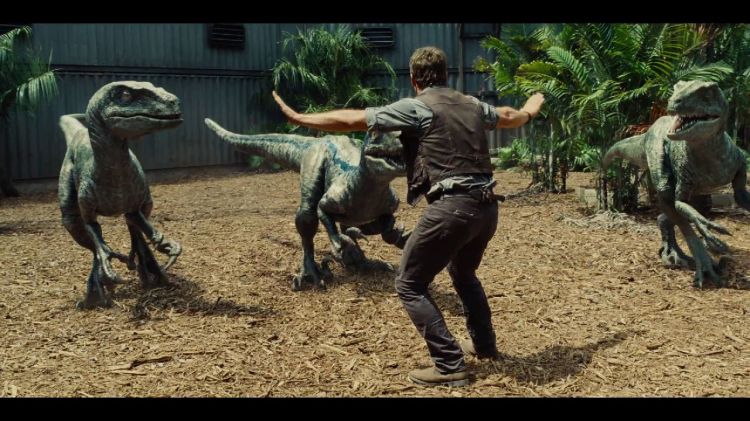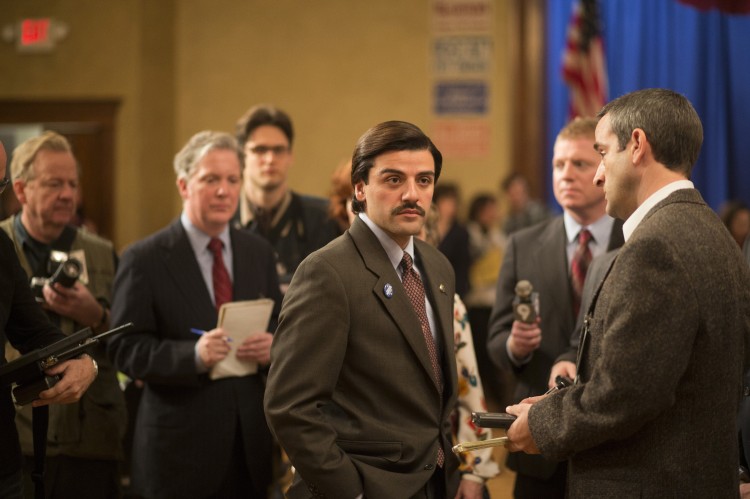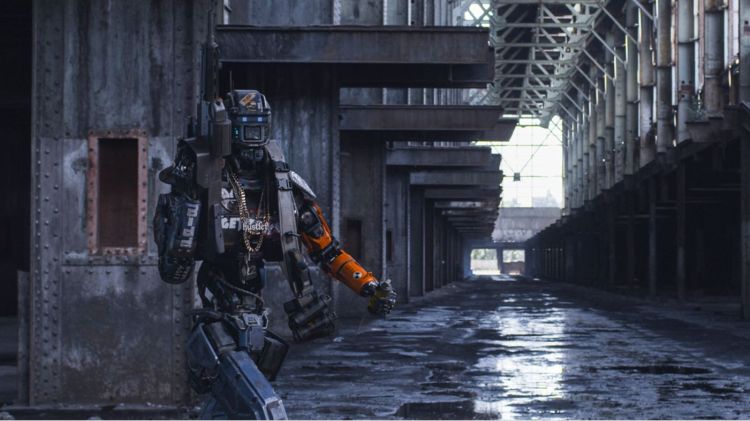
Due to the hefty amount of spoiler sensitivity involved in Star Wars: The Force Awakens that has inspired unity on the internet that makes Jimmy Carter wish he had made a Star Wars picture, to the point that even vaguely nudging towards character traits or naming locations gets somebody very very disappointed in your lack of tact, I’m obviously going to have to start this review off with a URGENT SPOILER ALERT!
Not only because, y’know, people get mad about hearing what actor appears in the movie, but also because there are story elements that one has to discuss in detail or allude to in order to talk about this movie. It’s imperative, otherwise I’m just going to go into vague “this was good, that was ok” without elaborating and that just bugs me. I will obviously not reveal the really big plot points that are surprises – the ones that undoubtedly other viewers will walk out speculating and spilling their reactions about – but I have to get into a story synopsis at least and discuss how some decisions affected the final product.
So, if you don’t mind a vague at best, cursory at worst, knowledge of what happens in this movie, feel free to read on, but if you really don’t want to know a damn thing, this is the SPOILER ALERT OF NO RETURN AND TURN BACK NOW.
OK?
YOU READY?

The first unshakeable feeling I got walking out of Star Wars: The Force Awakens is the feeling that I had seen this movie before. If I were in my 40s, I’d get a chance to be really snarky and claim I saw it in 1977, but instead I can only say that I have indeed since this film before except with only the slightest change in wardrobe.
And going on the internet has allowed me to see that pretty much all others who seen The Force Awakens have recognized all the exact same story beats of the first Star Wars picture, but the real tell and reward from reading these reactions (as well as allowing myself a little under a week to actually write this review at the risk of losing the hype that would bring views) is in seeing whether or not people feel this damned the movie or was a great boon to it. Some think it solidifies the movie’s role as a soft reboot to reign in more optimism and implant the new characters – whom we’ll get into – in a familiar story, others think its shamelessly lazy and derivative and a cop-out and just a poor cover for lack of originality.
I honestly sit somewhere in between one feeling or the other. If I’m being honest with myself, in spite of all my cautious pessimism, I left the movie thinking it was ok and I can even see myself eventually growing to like it reservedly the same way I do now with Return of the Jedi – which is on the same level as The Force Awakens more or less – or Star Wars – Episode III: Revenge of the Sith – which is still a bit underneath The Force Awakens, because for all we can bitch and moan about how writers Lawrence Kasdan, J.J. Abrams, and Michael Arndt retrace Lucas’ original scriptwriting steps, we all need to remember that Revenge of the Sith has more cringe-worthy dialogue than even the worse The Phantom Menace and Attack of the Clones.

Anyway, their script begins with Leia Poe Dameron (Oscar Isaac), Princess Leia’s top pilot in the Rebellion Resistance, sending his droid R2-D2 BB-8 off with an important document he just received to escape capture from the Empire First Order while Poe is taken prisoner on the way to the Death Star Starkiller Base by the masked black Sith Avenger of the evil Order, Darth Vader Kylo Ren (Adam Driver), who takes charge alongside Prickly British General Moff Tarkin Hux (Domnhall Gleeson). BB-8 finds his way through the desert planet Tatooine Jakku, where a gearhead who finds herself feeling trapped in the barren wasteland named Luke Rey (Daisy Ridley) and, upon finding out about BB-8’s documents, dedicates herself to returning the droid to the Resistance with the aid of Wild Card ally Han Solo FN-2187, a Stormtrooper defector who is dubbed by Poe “Finn” (John Boyega) during their daring escape from the First Order’s Star Destroyer. Rey and Finn journey across the galaxy with disillusioned elderly mentor Obi-Wan Kenobi Han Solo (Harrison Ford) who had once had a hand in the central conflict between Resistance and First Order ages before this movie’s opening, while Finn – with a death warrant on his head by his former employers – is less willing to be involved in the fight itself and more eager to escape his pursuers.
I know that was sort of annoying, but while of course it’s respectful that some of this movie’s most vocal defenders do not let the movie’s outright plagiarism of self bother them as that’s not wholly the point of the movie and the familiarity of it is in some cases comfortable, it’s important to recognize that yes, this movie is for real for real ripping itself off. It’s not superficial changes, Star Wars: The Force Awakens is exactly as recognizably unchallenging as everyone is saying.
Of course, what is especially interesting about this decision to retread into the first Star Wars is how Lawrence Kasdan was noted as the primary screenwriter returning after his work for the original trilogies… yet the original 1977 film is the only one of the three that had no writing input whatsoever from him. However, Star Wars creator George Lucas was still involved in both building the story for The Empire Strikes Back (Lucas has sole credit for this while Kasdan shares screenwriting credit with Hawksian legend Leigh Brackett, who died shortly after turning in her draft – how much of the draft was kept in the final film is still up to scrutiny) and co-wrote the script with Kasdan for Return of the Jedi. So this is Kasdan’s first entry into the original story and what’s more without the facilitation of George Lucas, who was almost certainly the real ideas man between the two of them.
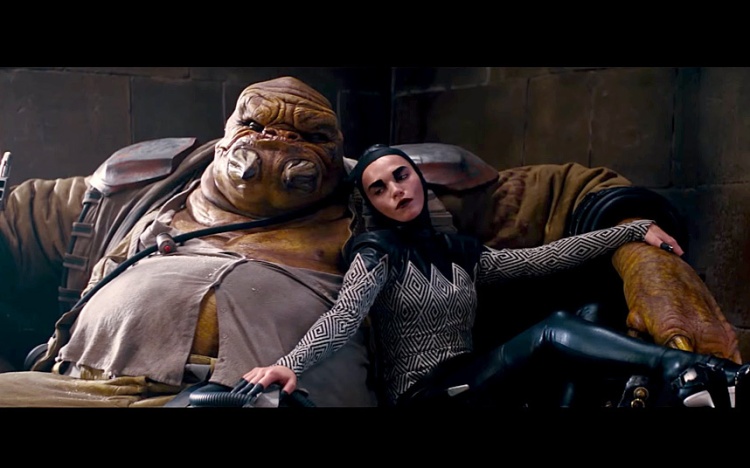
Let’s recognize and accept something right off the bat: All of the Star Wars scripts are the hands-down weakest part of the movie and while I’m certain there are many people who walk into those movies in anticipation of the story, it is not what keeps their butts in those seats. Hell, all of the Star Wars movies are derivative to a notable degree from mythology tropes and hero’s journey fixtures but it’s all something that George Lucas undoubtedly has an enthusiasm and knowledge for.
I don’t think Kasdan was that guy (and Abrams especially, Mr. “Mystery Box”, probably doesn’t even care about it), he was just the guy to filter what works and what doesn’t. All of this to point out that it feels like, honestly, every decision to hang tight intellectually to the Original Trilogy communicates more and more a lack of confidence and certainty in the storytelling that all the other Star Wars movies (even the prequels) – one that says “THIS is the journey we are taking these characters on” instead of tripping over itself to say “Hey, we’re not gonna screw it up! It’s gonna be EXACTLY. LIKE. THE. FIRST. TIME!” In spite of Star Wars just being derivative of The Hidden Fortress and Odin Knows How Many Westerns, it covered its recognizability with true weight on the story – the futility of leaving Tatooine, the menace of the Death Star, the thrill of the battle. Star Wars: The Force Awakens relies more on the cushioning of heightened expectations (which are of course unfair to it) with nostalgia.
Another detriment from this decision is what I call the Ghostbusters II effect – this desperation to dig into the exact same story beats means undoing most of what the last few movies fought to do to wrap up the story. You need to remove all of the resolutions between the characters – Han Solo and Leia (Carrie Fisher) are now separated and Solo has left the Resistance just because the story wants him to be re-re-disillusioned, the New Order rose from the Empire just because we need an antagonist, there’s also a poorly defined New Republic simply so that we can have another “blowing up Alderaan” in all of the ways The Force Awakens acts as a Greatest Hits movie for the franchise.
But the biggest one – the one that makes me most annoyed by this remnant play – is that every time the movie seems to imply that it is finally about to deviate and be its own story, it frustratingly returns back to A New Hope 2.0 mode. Rey and Finn are on their own adventure for a while and then revert back to Han Solo’s entry, the three of them break away again and then we get another Mos Eisley cantina sequence… and this is all frustrating because the new factors are admittedly more interesting than the old.

The new lead actors for instance – Ridley, Boyega, Isaac, Driver – are better here than maybe any other Star Wars film has ever had and it’s even more impressive when their characters are kind of compromised on a screenwriting level. People have completely dismissed Rey as a “Mary Sue” on account of her skill set and that’s not really something I agree or disagree with (Anakin and Luke Skywalker are just as much Gary Sues, so it doesn’t bother me), but her emotional arc is absolutely solved halfway through the script so all that’s left is her evolution as a hero and Ridley gives Rey humanity and hesitance towards her newfound role in the universe that’s not in the dialogue or story beats that makes her earn the fact that the movie ends on her perspective despite it beginning on Finn.
Finn, on the other hand, has an excessive amount of atonal character traits. He has an urgent arc based on his previous affiliation with the New Order and his fear of their retribution towards him that makes him idealistically attractive as a protagonist and that Boyega is 100% qualified to portray, but that gets sidelined often by the movie’s eagerness to make him goofy and comic relief. It doesn’t entirely go together well, but not even Daniel Day-Lewis or Michael Fassbender would have been able to make such a terrible personality flip work and Boyega reins it in and imbues a balance of himself in Finn that we can totally believe this same guy who is ready to run away can sometimes go overboard on his interrogation.
Isaac, an actor I’ve adored for a long while now, has maybe the most undernourished character in Poe Dameron but, man, if his devil-may-care charisma didn’t steal the show every time he was on-screen, I don’t know what’s up. But even he’s not my favorite performance when it comes to the new villain Kylo Ren’s turn by Driver, an actor who has more autonomy than Hayden Christensen did as Anakin Skywalker did and so is able to completely play out the immaturity and emotional instability Ren has to literally steer scenes psychologically and make every moment Ren is in the same room as a protagonist feel threatening and unsafe.
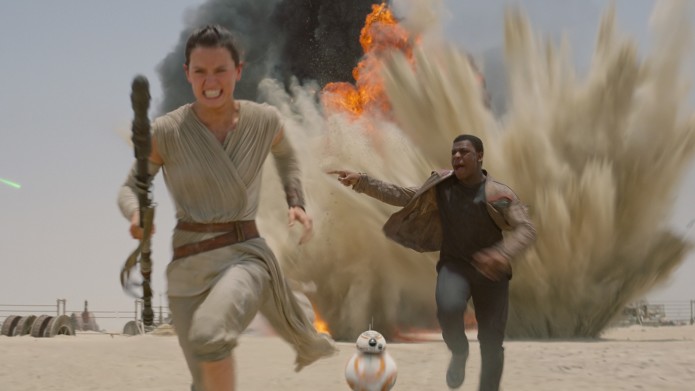
The older actors honestly are the real disappointment – Fisher is the Leonard Nimoy of this movie with no real reason to be here except communicating things we as an audience already knew, while Ford has his moments where he lets obvious fatigue with playing Solo again play into a disappointment and self-doubt and even times where we can recognize the smuggler inside him, but Ford feels like he’s about ready to go to sleep. In the meantime, Gleeson and Nyong’o just function as much as they need to while Andy Serkis gives his first performance under a mass of CGI where he is unable to emote in any way shape or form as Sith Supreme Leader Snoke. Max von Sydow is out as quickly as he’s in. And Mark Hamill practically forgot his lines.
OK, that last one was a joke. One that you won’t get until you see the movie. But hey, The Force Awakens is also a movie that assumes you saw the Original Trilogy – what with its dismissal of the sacred twist of The Empire Strikes Back and certain emotional beats just not hitting as hard when you don’t recognize these characters the way you do with the OT in your head – that the movie can only half work as a reintroduction into the saga. Plus it suffers the same problems as Return of the Jedi in maintaining that the entire universe revolves around one small family that irritates me.
That’s a lot dedicated simply to the narrative content of the film, but that’s honestly because there’s not much to talk about on the technical level. J.J. Abrams has never had much to him on the visual aesthetic without him lifting out of the Spielberg playbook like he did in Super 8 and he does so here sparingly, but to the point that most of the handful shots that actually tell a story had already been revealed in the trailers (reading earlier that he intended to use Terrence Malick, John Ford, and High and Low as his visual inspirations gave me a belly laugh) and the movie, I shit you not, ends on the ugliest shot of his whole career, a helicopter telephoto that jars completely with their need to make an unnecessary rhythm between close-ups and wides to pretend that they don’t solely rely on the actors to control the tone of every moment. Still, in spite of all the continuous camera movements and dutch angles done without reason, cinematographer Dan Mindel has a wise eye for color that can pop and distinguish the objects on-screen in a comic book manner, but it’s not in the same manner as distinguishing atmospheres and allegiances. I never felt hot watching Jakku the same way I did watching the sunbaked Tatooine, I never got a sense of isolation with the final location like I did the swamps of Dagobah, I never got a sense of unnerving sterility in Starkiller Base like I did the Death Star. This while Mary Jo Markey and Maryann Brandon are a little too eager to deviate from the Star Wars way of cutting sequences (the final climax – for all it being the most bullshit moment of the movie’s “WE ARE NEW NEW HOPE” – is such a great place for a cross-cutting showcase and instead we have to patiently wait until we don’t care about one end of the battle to move on to the next) and make the film more modernized that alarmingly is the only place where the movie might very well reject its source franchise. And the CGI, save for the miracle of BB-8, is honestly just as good now as the CGI in the prequel trilogy was, with enough places threatening to age as quickly as Revenge of the Sith has (I can’t decide if Snoke already has with his obvious scar tissue and limit of facial expressions to hide what the shadows can’t) and is intercut with enough practical effects and creature work (though one robot we focus on at the cantina feels kind of lazy) that I don’t have much of a reaction to yet. The costumes are inarguably the best thing the movie has going for it visually, feeling like an evolution from our expectations in a way the set design doesn’t and being the most effective element in its small changes from the original to communicate how much time has passed and give characters like Rey in her homely rags and Poe in his cocksure jacket that he lends Finn, who otherwise sports a completely characterless black (somehow going against the color scheme in the originals, since Finn never feels like a villain).
On the sound end, well, I literally can’t say more than we already have said about Ben Burtt’s intelligent application of sound to give physicality to these fantastical worlds (my favorite thing is what he does to BB-8 to make him feel like a character – from his beeps and whistles to communicate a charming sarcasm that’s more cute than anything else to the heavy thud when he’s rolling around on the spinning Millennium Falcon – maybe the only truly physical setpiece in the whole movie, when Rey and Finn escape Jakku) and if John Williams is for once dethroned by the acting as the consistently best thing in a Star Wars film, it’s not from a lack of quality so much as how much more subtle he is – recognizing these new characters enough to heel on his repetition of motifs for emotional manipulation, he only fades into those cues when they’re at their most suggestive – Snoke has a certain theme from Revenge of the Sith sneak in that almost feels like a spoiler, so I won’t name it – and otherwise doing his John Williams thing the way he does it best, sweeping musical landscapes of the most operatic kind.
In any case, that’s just a whole lot of sifting through the details to explain how I’ve overall just felt about the movie which is… ok. I thought it was simply ok. I think Return of the Jedi and The Force Awakens can be switched around a lot on where they rank in my preference of the Star Wars films, but The Force Awakens is without a doubt better than every one of the prequels. Which is about as good as one expected and I certainly had my moments where I enjoyed myself beyond my expectations – the Falcon chase and BB-8 and Poe and especially the final lightsaber battle, which, despite poor editing in Abrams manner, holds on to the psychology of Empire and Return way better than expected – but I didn’t walk out feeling like I had seen a Star Wars film.
Maybe I need to give it a bit more time but that’s the biggest one – in spite of its need to hold onto Lucas’s characters and story beats, the lack of personality made me feel like I’d watched something with as much as a Star Wars film as The Muppets in 2011 felt like a Muppets movie. Still not entirely feeling like Star Wars is better than feeling a bad movie and whatever structural or storytelling flaws The Force Awakens has, it’s not a bad movie. It carries itself as far as it needs to be Rian Johnson takes the wheel and with the promise of these new characters and the suggestion of where they’re going now, maybe the force will finally awaken when that movie is released in two years… because for right now, it’s dormant… but it’s just a little bit ready…

































